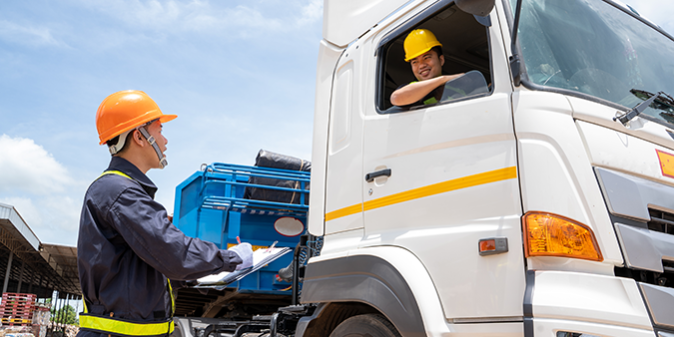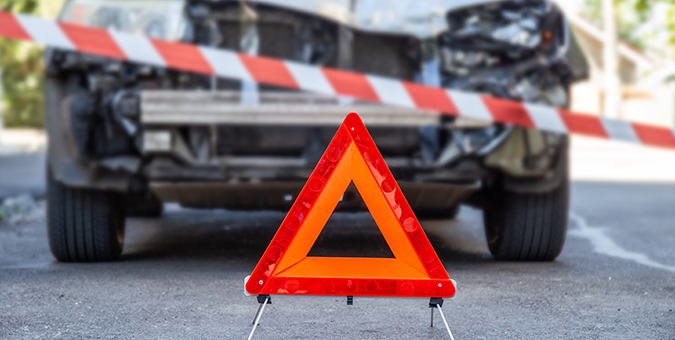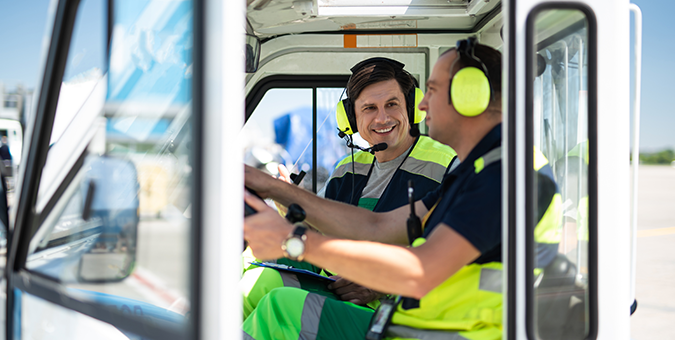Five Strategies to Prevent Vehicle Accidents on Industrial Sites

Vehicle-pedestrian incidents are a top workplace hazard at industrial sites. Explore five strategies to improve safety and prevent accidents.
Author: Lisa Fade
June 16, 2025
Vehicle and pedestrian interactions on industrial sites pose a serious—and often underestimated—risk to worker safety. In 2023, transportation-related incidents were the leading cause of fatal occupational injuries, making up 37% of all workplace fatalities, according to the U.S. Bureau of Labor Statistics.
The encouraging news? Many of these tragedies are preventable. With proactive planning, site-specific controls, and consistent enforcement, health and safety professionals can significantly reduce the risk of vehicle-pedestrian accidents. Here are five practical strategies to help protect your workforce.
Identifying The Risks
At industrial and high-traffic worksites, vehicle and pedestrian incidents aren’t confined to public roads. They happen where we work—on access roads, in loading zones, around parked equipment, and near active operations. And when they occur, the consequences can be severe—injuries, equipment damage, operational delays, and liability exposure. Understanding the most common contributing factors is the first step to reducing them.
A. Infrastructure & Site Hazards
Poor lighting, inadequate signage, potholes, blind intersections, and shared vehicle-pedestrian zones all create risk—especially when they go unaddressed.
B. Vehicle Condition
Worn tires, faulty brakes, broken lights, and fluid leaks can all contribute to on-site accidents. Even minor issues can escalate quickly in high-traffic environments.

C. Human Behavior
Rushing to meet deadlines. Distractions from phones. Fatigue. Overconfidence. These everyday behaviors increase the risk for everyone on site.
Five Practical, Proactive Strategies
Improving vehicle and pedestrian safety doesn’t always require major spending. Often, it’s about doing the fundamentals—consistently and well. Here are five proven strategies:
#1 Conduct Regular Site Safety Audits
Walk the site with both vehicle operators and pedestrians to identify hazards others might overlook. Assess signage, lighting, traffic flow, and blind spots. Pay special attention to informal crossing areas—they can often be made safer with clearly marked walkways and signs.
#2 Use Physical and Technological Controls
Utilize speed bumps and signage to reinforce safe driving expectations. Install barriers between walkways and vehicle routes. Add cameras, speed bumps, and sensors to improve visibility and driver awareness. Technology can’t replace vigilance—but, used wisely, it can support safer navigation.
#3 Require 360° Vehicle Inspections
Train drivers and equipment operators to walk around their vehicles before each use. Check for worn tires, fluid leaks, blind spots, or obstructions. This simple habit can prevent a wide range of costly incidents.
#4 Reinforce Training and Expectations
Ensure workers understand the site rules—speed limits, right-of-way policies, restricted zones—and why they exist. Frequent refreshers and toolbox talks keep safety at the forefront.
#5 Enforce the Standards
Set clear expectations—and back them up. Monitor behavior, document violations, and take corrective action when needed—including revoking driving privileges if someone puts others at risk.
Safety Spotlight: Backing Incidents
Vehicle backing is one of the most common—and preventable—causes of injury on industrial sites. These incidents are often low-speed but high-impact, especially when pedestrians are involved.
Best practices:
Equip vehicles with functional alarms, mirrors, and rear-facing cameras
Require operators to “get out and look” when visibility is limited
Use trained spotters in tight or congested areas

Additional Safety Considerations
There are other key factors that can influence vehicle and pedestrian safety on your site. These often-overlooked details can make a big difference—especially in dynamic or high-risk environments.
Weather Conditions: Rain, fog, or ice can reduce visibility and traction. Adjust speed limits and remind workers to slow down and stay alert in bad weather.
Pedestrian-Driver Communication: Encourage direct visual cues—eye contact or hand signals—before crossing shared spaces. It’s a simple gesture that can prevent serious accidents.
Spotters & Flaggers: In congested or high-risk areas, spotters play a vital role in directing traffic and protecting pedestrians. Empower them to stop work if they see a hazard.
Driver Licensing: Ensure all operators have the proper credentials for the vehicles or equipment they’re using. Compliance isn’t optional—it’s essential.
Why It Matters
Whether you’re operating forklifts in a warehouse or work trucks at a refinery, vehicle safety is everyone’s responsibility. It starts with awareness, is reinforced through training, and is sustained by accountability.
These safety measures don’t just protect lives—they also protect your bottom line. Reducing incidents by just 20% can result in significant cost savings from fewer equipment repairs, reduced downtime, and lower insurance premiums.
A proactive approach doesn’t just check the box—it reduces risk, protects people, and keeps operations running smoothly.
Looking to Strengthen Vehicle Safety for Your Organization?
With OSCAsafe’s Transportation, Vehicle, and Driver Safety training, your team gains the knowledge to stay compliant, alert, and equipped for real-world worksite challenges.
Invest in safer operations—partner with OSCAsafe today.
- Backing Incidents
- EH&S
- health and safety
- health and safety programs
- injury prevention
- oscasafe
- performance training
- safety
- Safety Audits
- safety class
- safety hazards
- safety training
- Site Hazards
- site-specific controls
- Vehicle Accidents
- Vehicle Inspections
- Vehicle Safety
- worker safety
- worker training
- workforce safety
- workforce training

